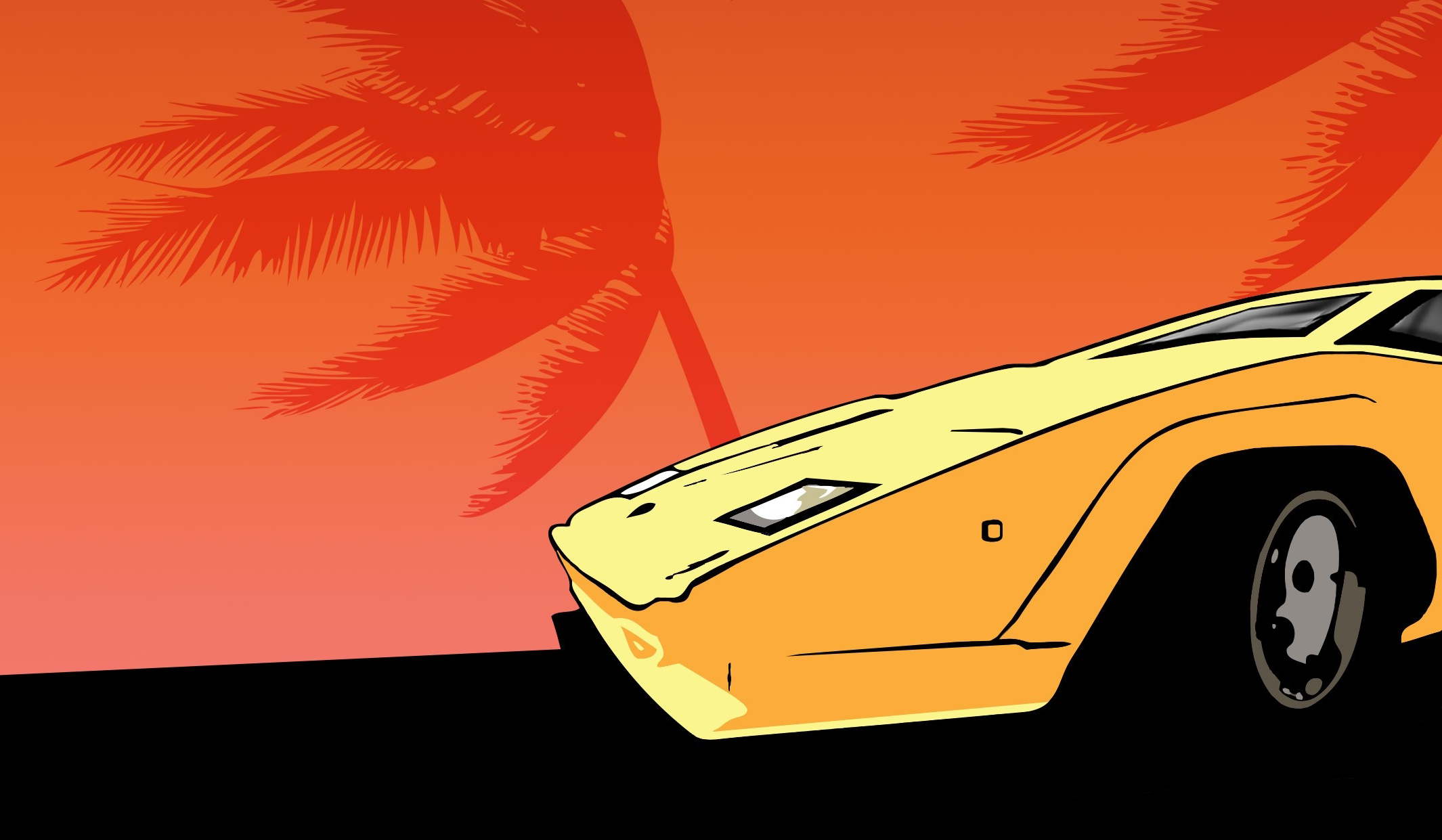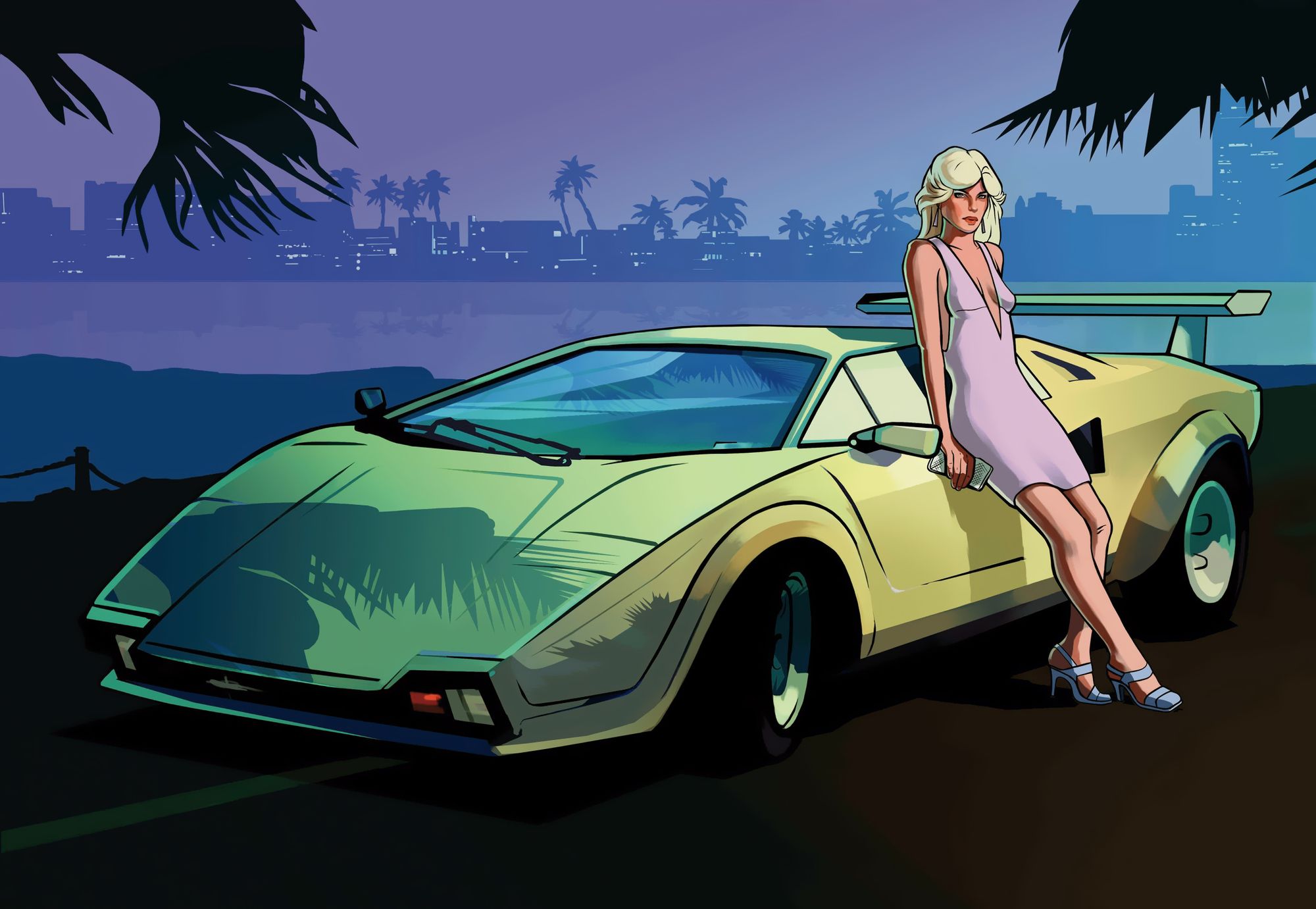GTA Vice City Created a New Wave of ’80s Nostalgia
How a video game kickstarted reverence for a decade — even for those who never lived through it

“Starting in the 2000s, after the success of the video game Grand Theft Auto: Vice City, attitudes towards the ‘80s shifted from parody and ambivalence to that of homage and reverence. Late-stage Gen-Xers and Millennials that had grown up in the ’80s had reached adulthood in the 2000s. For the artisans, musicians, writers and other creative types of the generation, elements of their youth found their way into their output and ’80s retro began to take off.”
Nicholas Diak, Lost Nights and Dangerous Days: Unraveling the Relationship Between Stranger Things and Synthwave
Reverence for the 1980s has been a huge part of our culture over the last decade. Whether it’s the straight-faced homage to Kingian horror in Stranger Things or the more flamboyantly tongue-in-cheek parody of American Horror Story: 1984, it’s hard to deny that the world is in love with the glamour and excess of the decade.
But what is the origin of this last decade’s sudden burst of nostalgia? Stranger Things is often cited as the obvious starting point for the slew of ’80s-inspired media in the last 5 years, but I think the likes of Stranger Things are symptoms, not a cause. The real roots go back much further. The headline has given away where I think those roots lie, so let’s get straight into investigating why I think Grand Theft Auto: Vice City is ultimately responsible for society’s current ’80s obsession.
As Diak stated in the opening quote, ’80s nostalgia has been seeping into our culture since as far back as the turn of the millennium. Those responsible for this first wave were born and raised in the decade itself, and time had given them just enough space from the politics and decadence to allow for a certain rosy tint by the time Y2K rolled around.
Enter Grand Theft Auto: Vice City. Produced by Lezlie Benzies and written by Dan Houser, Vice City was created by people who were born in the ’70s and had their teen years in the peak of ’80s decadence. To them, this game oozed nostalgia for those rose-tinted adolescent years (and, as British artists, revered a world and aesthetic that they could see on TV but never touch in a recession-struck Britain — but that’s a topic for another article).
Crucially, Vice City was one of the first major pieces of media to really capitalise on the childhood of Houser’s and Benzies’ generation. Youtuber Gmanlives, a fellow man of culture and Vice City obsessive, said it best: “This was done at a time before this became commonplace. Before every film, tv show and marketing campaign just had to be set in that decade and leech off that aesthetic. So, in a way, it really pioneered using that decade as a backdrop”.
And he’s right. This was 2002. Just enough time has elapsed for the ’80s to no longer be just “the last decade”. It was now officially retro, and Vice City was one of the first to take advantage of the power of nostalgia for that decade. But it’s more than just that — Vice City also defined the aesthetic of the ’80s throwback.
The style is now often referred to as Outrun, in homage to the 1986 game that perfectly encapsulates it, but the truth is that it was Vice City that brought these visuals into the 21st-century zeitgeist. The rolling palm trees, the hot neon pink, the flashy supercars, it’s all here front-and-centre. It even features a proto-synthwave theme tune, nine years before the music genre is widely believed to have been kickstarted by the 2011 movie Drive.

But how is Vice City, released at the start of the ’00s, responsible for a craze that didn’t peak until nearly fifteen years later? Well, it’s simple, just as Diak said that the maturing of ’80s kids lead to the first wave, the maturing of those turn-of-the-millennium kids has brought about a wave of young adults who are nostalgic for the nostalgia. I was born in 1995. I never knew the ’80s, yet I still grew up in it. Vice City released when I was seven years old and, for better or for worse, I’ve been playing it ever since then. The nostalgia for the ‘80s infected my mind from a very young age and now everything about its bright, colourful, garish world reminds me of my own childhood just as much as it reminds people twenty years older than me of theirs.
Now, this second wave of ’80s kids is old enough to be creating and inspiring others. Hotline Miami is a game highly indebted to the neon gore of Vice City. That series and Stranger Things were both instrumental in bringing synthwave music to the mainstream eye — legitimising a genre that recalls and reinvents the synth-heavy pop music of the decade. Far Cry: Blood Dragon is more likely to burn you with retina-melting neon than any of the game’s more traditional fire-breathing dragons.
Legality and classification boards aside, the reality is that many teens, and even pre-teens, were playing Vice City. Grand Theft Auto was simply too new and exciting to be ignored by any gamer at that time. The joys of open-world sandbox destruction had been unveiled by Grant Theft Auto III just a year prior, and gamers clamoured for more. So of course Vice City defined childhood for these people. We all remember the games of our childhoods that blew our tiny minds with experiences we couldn’t relate to anything else, and this is no different.
We came for Grand Theft Auto, but we stayed for synth, sun, and sleek Testarossas. The synthwave generation has only just reached adulthood. Creators and artists continue to refine their style and find new inspirations from the decade. This isn’t the end. This generation has more nostalgia to excavate from a time period that we never saw.
